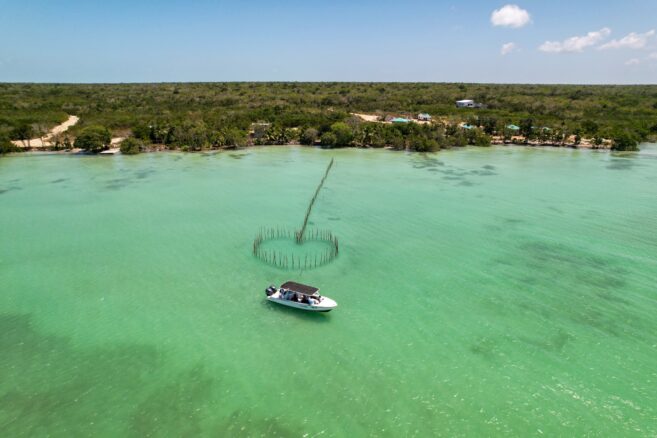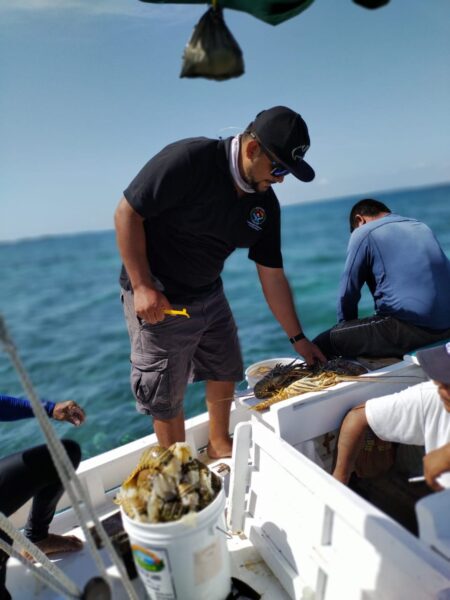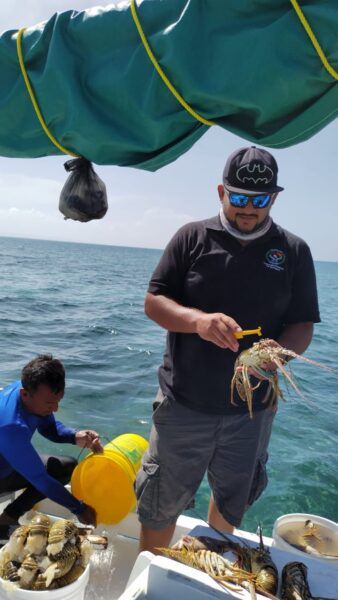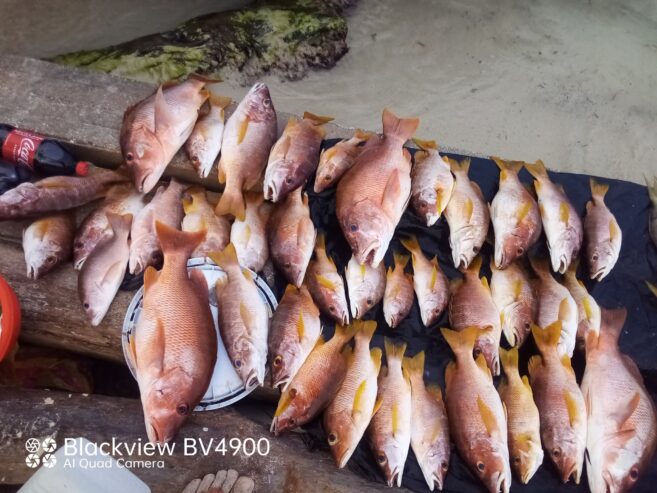As the morning sun rises above the Caribbean, Mark Heusner, a seasoned fisherman with stories woven by the sea’s elements, gazes out at the sea he’s known for 65 years. In the days of old, Mark’s hands wove fish traps that yielded an abundance of jacks and black and red snappers. “I used to be the one who would bring in the most lobster for years,” shares Mark as he proudly recalled. “I have about four or five trophies. I used to be the top scorer. The most I ever produced in lobster tail there was 15,000 pounds for the season.”

Yet, the memory turns bittersweet. “But now it’s not like that,” Mark reflects on the difference of the altered seascape. The ocean, once teeming with life, now tells a different story of the changing world that exists between man and sea.
Belize, though small in size, stands as a beacon of ambition in the realm of coastal and marine protection. Internationally acclaimed for its commitment to conservation, Belize has 103 protected areas, 32 of which are Coastal and Marine Protected Areas (CAMPAs). Each protected area is designated under a specific category based on why it is being protected. Some are managed as completely closed reserves, meaning no fishing, mining, or development. While others allow regulated fishing and development. They are also managed by different regulatory agencies such as the Forest Department and the Fisheries Department. With approximately 50% of the country’s GDP that relies on natural resources, safeguarding these treasures is not just a priority; it’s critical for the country’s future prosperity.

But amidst the beauty, challenges lurk. Limited resources and fluctuating gas prices pose challenges to enforcement efforts. During close seasons, patrols intensify, an essential deterrent for illegal activities. Yet, the scarcity of resources sometimes limits coverage, hindering effective operations. There are many cases involving undersized conch and lobster, attributing it to overfishing, and the penalties range from fines for commercial fishers to significant sums for special protected species.

It is an ongoing challenge to secure consistent and sufficient financial support for CAMPAs. Adriel Castañeda, Ag. Senior Fisheries Officer, Belize Fisheries Department, underlines that financing for protected areas has always been one of the biggest limitations. He notes, “This is affected by several factors including the size of the protected area, the distance from supply of resources, remoteness, purpose of protection (type of protected area) among many other factors. The government’s budget covers salaries and operations, while grants from partners like PACT, MAR Fund, CRFM, FAO, and the World Bank contribute.”
NGOs, like the Toledo Institute for Development and Environment (TIDE) play a vital role in collaborative conservation, working closely with government agencies. Asad Magana, the Executive Director of TIDE, asserts, “TIDE has over 25 years of experience in managing MPAs, namely Port Honduras Marine Reserve and more recently Sapodilla Caye Marine Reserve and approximately 90% of our operations are funded through external donors.” NGOs also assist in uniting communities with the conservation efforts of CAMPAs. Asad continues, “Community involvement is vital because they are the main users of the resources, thus strategic stakeholders, to assist both in addressing violations and adhering to the regulations and best practices within the MPAs.”

Just imagine, since 2021, Belize has expanded its Biodiversity Protection Zones from 11.7% to 20.5% of Belize’s Ocean. Certainly, the demand for resources to manage these areas also increased on a large scale. Adriel notes, “Long-term sustainable financing initiatives are crucial since it will ensure that funding is available to cover some of the major core costs and recurrent costs for managing a protected area. It also allows an opportunity for innovating the way protected areas are managed.”

To manage these expanded protected areas and marine resources in an efficient and effective way, Belize signed two major agreements for long-term finance in November 2021. This created a resilient approach to marine conservation and supports Belize’s commitments by setting the ambitious goal of applying for the IUCN Green List Programme by 2027 and meeting the target of effectively conserving, protecting and managing 30% of marine and coastal areas within Belize’s territory by 2030, under the Global Biodiversity Framework. The Blue Bond, which comprises the Blue Loan and Conservation Funding Agreements signed between the Government of Belize (GOB) and The Nature Conservancy (TNC), was hailed as a trailblazing innovative financing mechanism to provide funding over 20 years.

There was also the groundbreaking Coastal-Marine Project Finance for Permanence (PFP) initiative, Resilient Bold Belize, signed between the Government of Belize, TNC, and World Wildlife Fund (WWF). Osmany Salas, the Lead for the Belize PFP, notes the significance of what this project is positioned to do. Osmany remarks, “This is the world’s first fully coastal and marine PFP that will ensure the long-lasting protection of Belize’s biodiversity, economic viability, and community resilience against climate change.”

PFPs create a single agreement involving governments, donors, and civil society, mobilizing resources for large conservation networks. “The method employs a single closing, ensuring commitment only when conditions are met, avoiding piecemeal funding and enabling ambitious conservation goals. Currently in the design phase, Resilient Bold Belize holds promise for transformative, sustainable marine protection,” says Osmany.

While the project is being finalized, Beverly Wade, Director of the Blue Bond and Finance Permanence Unit, states, “We are strengthening the institutional and the governance framework, and also looking at how to now bolster livelihoods to ensure that we make a difference in the wellbeing and welfare of the Belizean people.”

The Belize Fund for a Sustainable Future (Belize Fund), the private conservation trust fund established through the Conservation Funding Agreement under the Blue Bond, provided emergency gap funding, totalling $559,563.00 to safeguard the Belize Marine Protected Areas Network (BMPAN) in December 2022. Going forward, the Belize Fund plans to provide long-term support to MPAs for core management costs such as enforcement, and scientific research. This funding will also support robust protection to prevent illegal exploitation and community outreach activities, ensuring the sustained safeguarding of Belize’s coastal treasures.

In the echoes of Mark Heusner’s memories, the collective hope resonates among fishers and other livelihood dependent groups, for a revival of the sea’s once abundant treasures—lush conch, plentiful lobster, and teeming fish. Marine protected areas are necessary interventions, offering not only a shield for biodiversity but a time and space for the sea to heal. As we navigate the present challenges, we draw wisdom from the past to shape Belize’s coastal and marine future of thriving ecosystems and economic resilience.
Submitted by Chalsey Gill Anthony
Communications Officer
Belize Fund for a Sustainable Future


